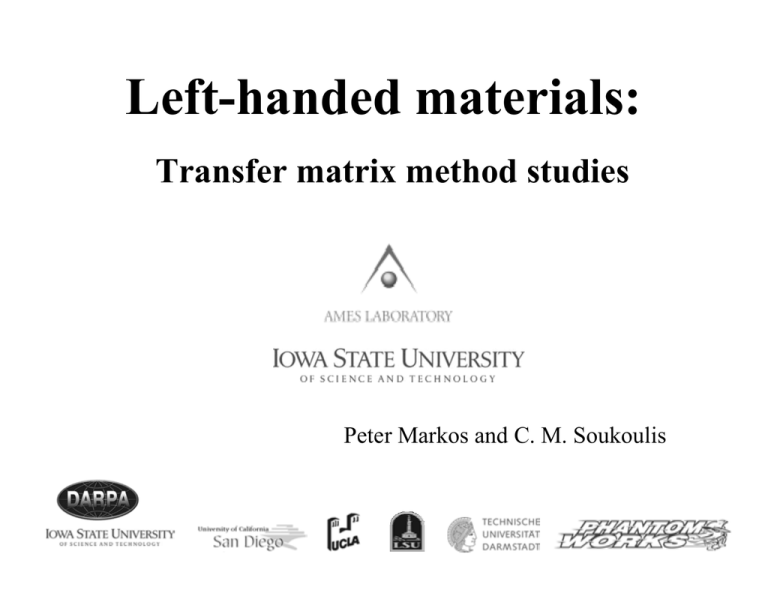Left-handed materials, also recognized as negative index materials, have engendered profound intrigue within the sphere of metamaterials. Their unique characteristic lies in the manipulation of electromagnetic waves in ways that conventional materials find impossible. These materials exhibit a negative refractive index, which enables a number of revolutionary applications, such as superlenses, cloaking devices, and enhanced imaging systems.
To understand the significance of left-handed materials, it is vital to delineate the fundamental principles underlying their operation. The defining attribute of these materials is their ability to rotate the polarization of electromagnetic waves, leading to anomalous refraction and diffraction. When an electromagnetic wave enters a left-handed material, it experiences a reversal in its propagation direction. The implications extend into various realms of optics and wireless communications, where the potential for manipulating light and radio waves opens new pathways for technological evolution.
A pivotal tenet of left-handed materials is their structure, often engineered at the microscopic level. Utilizing a composite of metallic inclusions and dielectric substrates, researchers can create a medium that responds uniquely to electromagnetic stimuli. This engineered approach enlists principles of artificial materials, allowing for the design of complex interactions that challenge the conventional paradigm of natural materials.
The promise of left-handed materials lies not only in their theoretical implications but also in their prospective applications. The advent of superlenses, for instance, showcases the potential of left-handed materials to transcend the diffraction limit inherent in traditional optics. By enabling imaging beyond the constraints of classical optical lenses, these metamaterials can reveal finer details that would otherwise be obscured. This advancement has wide-ranging implications in fields such as microscopy, nanotechnology, and even biotechnology, where the ability to visualize structures at the molecular level is paramount.
Cloaking devices represent another exhilarating application born from the innovation surrounding left-handed materials. By bending light around an object, these metamaterials provide a form of invisibility that has fascinated both scientists and the public alike. The principles governing these devices rely heavily on the negative index properties, allowing for a near-total manipulation of the light path around the cloaked object. This concept, while still predominantly in the experimental phase, heralds a future where stealth technology can be significantly advanced.
Moreover, the integration of left-handed materials in antenna technology can enhance wireless communication systems. The ability to design compact, efficient antennas with improved directivity and bandwidth could revolutionize the telecommunications landscape. These metamaterials allow for the miniaturization of devices while simultaneously augmenting their performance, thereby addressing the ever-increasing demand for faster and more reliable communication networks.
However, the exploration of left-handed materials is fraught with challenges. The transition from theoretical exploration to practical application entails overcoming significant manufacturing hurdles. Creating materials with precise and consistent negative index properties at a scale suitable for commercial use remains a formidable task. Furthermore, the stability and robustness of such materials in real-world environments must be scrutinized to ensure their viability in technology transfer.
Recent advancements indicate a promising trajectory in the development of left-handed materials. Innovations in fabrication techniques, such as 3D printing and novel synthesis methods, are opening new avenues for the creation of complex metamaterials. Researchers are continually seeking to mitigate the limitations present in current materials, envisioning composites that can maintain their negative refractive index across a broader range of frequencies.
The burgeoning interest in left-handed materials has also stimulated discussions regarding their ethical implications and environmental impacts. As with any burgeoning technology, the potential for misuse, especially in military applications, necessitates careful consideration. The dialogue surrounding these materials should incorporate an assessment of their implications on privacy, security, and the potential for unintended consequences.
In summation, left-handed materials signify a profound shift in our understanding of metamaterials and their applications. The capabilities with which they manipulate electromagnetic waves challenge the previously accepted tenets of physics, prompting researchers and theorists alike to reconsider the limitations imposed by traditional materials. As the scientific community continues to unravel the complexities associated with these enigmatic substances, the promise of new technology burgeons, inevitably piquing curiosity and inspiring further exploration.
Ultimately, the trajectory of left-handed materials raises pivotal questions regarding their future—both in scientific inquiry and practical application. Will society harness these capabilities for collective advancement, or will they forge paths laden with ethical quandaries? The answers remain to be seen, but one certainty prevails; the journey into the realm of left-handed materials is as intriguing as the materials themselves.










